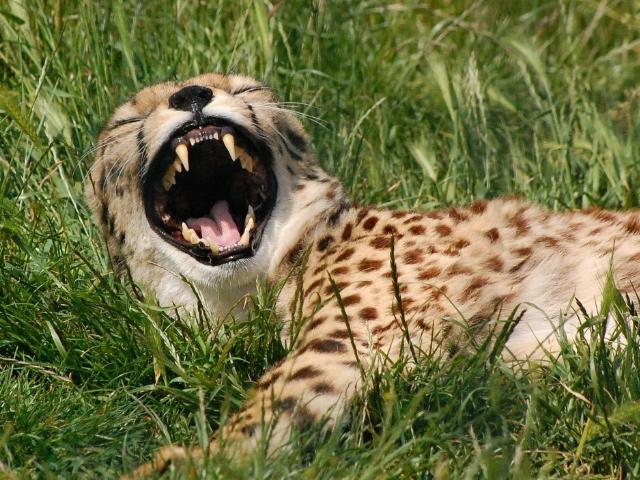After Freddie and Elton, the two male cheetahs, made their first kill in Kuno National Park making national headlines, the two spotted cats killed another spotted deer sometime on November 8 evening. Moving around the one square km enclosure, the fastest land animal got some space to sprint and recover from the long confinement in small bomas - first in Namibia and then in Kuno. Like a fitness test, the deer hunting is taking place inside a one square km fenced enclosure facilitating the cheetahs to catch the cheetal (spotted deer) herbivore and kill. But this is being termed as "cheetah project on the right track". The real test of cheetahs will begin when they are finally released in the open forest in the coming months to compete and face the ferocious leopards and packs of the wild dogs of Kuno, officials of the Union ministry of environment, forest and climate change (MoEFC&C) admit.
Cheetahs Chase Deer Inside Enclosure
The second kill in Kuno's enclosure comes over three days after their first kill in the forests on the evening of November 6 (Sunday), which was reported Monday. Cheetah is the fastest land animal on earth, capable of reaching speeds as high as 75 miles per hpur or 120 km/h . They are predators that sneak up on their prey and sprint a short distance to chase and attack and the poor deer inside the enclosure is no match to this speed. As the cheetahs need food after every two to three days, Kuno national park officials were expecting another kill. When in smaller enclosures, these cheetahs were being fed with buffalo meat twice a week. And these cheetahs acted on the expected lines. “The monitoring team had also spotted them making a chase last evening,” a forest official said excitedly . Every time the cheetahs make a kill, there is an adrenaline rush in the officials involved in their monitoring. From the crack of dawn to dusk, a team of over two hundred foresters have been leaving no stone unturned to keep an eye on the two cheetahs who were released from smaller enclosure to a bigger one earlier this week .The kill was spotted this morning ( Thursday) by a monitoring team that tracks the two cheetahs everyday to ensure their safety.
Also read: Cheetahs In Kuno National Park : Future Tense !
The animals are tracked in the wild using a Very High Frequency (VHF) satellite collar. The two cats are being monitored round the clock. “This is a huge task and also a very big responsibility. It seems that the hard work of the ground staff is yielding results and the translocation project is heading in the right direction”, officials of the Union ministry of environment, forest and climate change said. Out of the eight cheetahs brought from Namibia to Kuno, there are five female and three male Cheetahs. Two males have been released while the remaining may be released in the coming days later this month. Members of the cheetah task force are likely to meet soon to decide their release, one of the members said.
Six More Cheetahs To Be Released Soon
Also read: Why Cheetahs in Kuno National Park Are Linked with International Ivory Trade ?
“ This means that India’s cheetah introduction project involving a whooping Rs 96 crore is moving on the right track”, an official said. The next cheetah to be released in a larger enclosure will be Obaan, another male spotted cat. The release will likely take place in a week’s time. The other five are female cheetahs and have been named as Sasha, Siyaya, Savannah, Tbilisi and Asha. Like Freddie and Elton, Savannah and Sasha may be put together in one large enclosure. The others three may go together in a separate compartment. The larger enclosures consist of interlinked compartments spread across about 5-sq km area. Adequate prey base has been ensured in these compartments so that the cheetahs facilitate the hunting. But the real test of the cheetahs will begin when they are finally released in the open jungle.
By Deshdeep Saxena
Representational Images: Cover Pic Courtsey Press Information Bureau (PIB)




Comments
Post a Comment